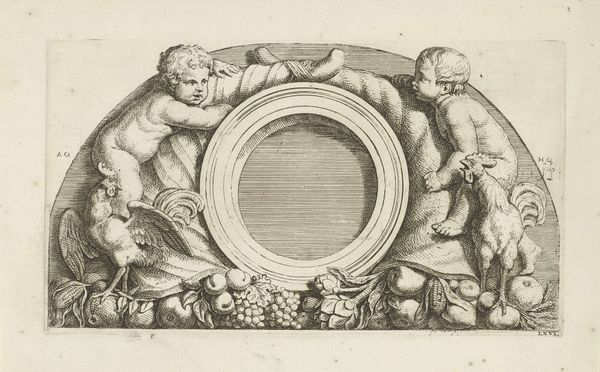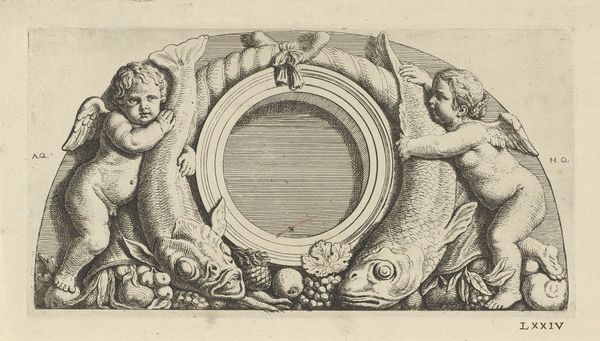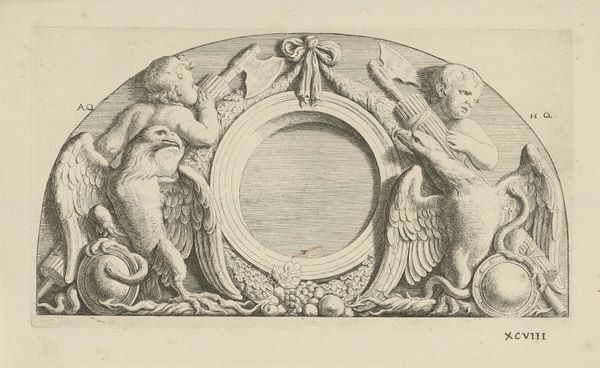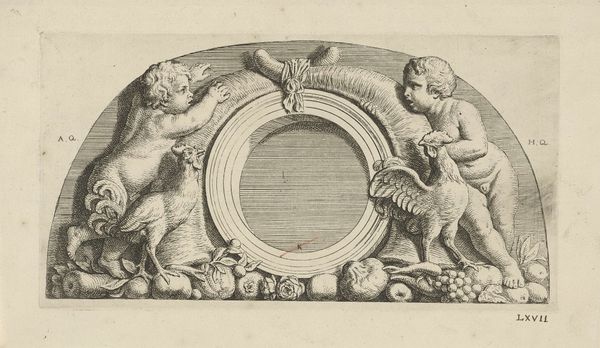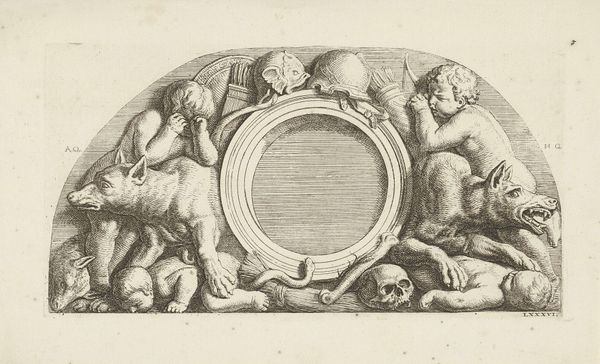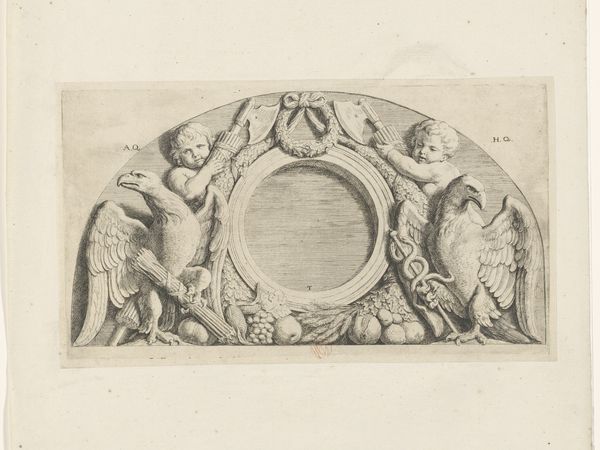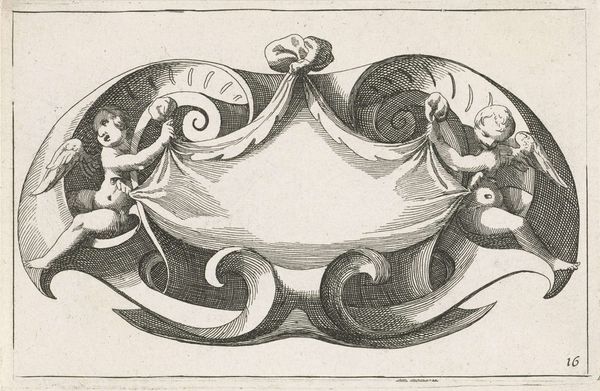
Lunette met putti, vissen en hoornen des overvloeds in de oostelijke galerij van het Stadhuis op de Dam 1655 - 1783
0:00
0:00
engraving
#
allegory
#
baroque
#
old engraving style
#
geometric
#
history-painting
#
engraving
Dimensions: height 153 mm, width 288 mm
Copyright: Rijks Museum: Open Domain
Curator: Right, let’s delve into this engraving, “Lunette met putti, vissen en hoornen des overvloeds in de oostelijke galerij van het Stadhuis op de Dam." The Rijksmuseum holds this piece which was produced sometime between 1655 and 1783. It's attributed to Hubert Quellinus. Editor: Oh, how utterly whimsical! Those cherubic putti riding what I think are dolphin-esque fish? It gives me such a lighthearted, fantastical vibe. Almost Baroque, but more playful, somehow. Curator: Baroque is indeed a key stylistic influence, informing the piece’s allegorical themes. Think of the cornucopia overflowing with abundance, the putti, representing innocence and divine love. This iconography, within the civic space of the Stadhuis, speaks to the values the city wished to project. Editor: So, not *just* decorative. These elements work together in conversation about prosperity and joy and such ideals... though honestly, that one putto looks like he’s about to slide right off. Is it just me, or is there an off-kilter quality here? It's so formally balanced but the expressions are so intense... It looks kind of tense, almost absurd! Curator: Interesting that you find a certain tension. I see it more as the dynamism inherent to Baroque. The figures are full of life. Look at the detail afforded to the fish scales. Consider this work in the context of Dutch trade. Fish held both literal and symbolic importance. It speaks to the relationship with the sea, and with nature, the country held. The "overvloeds," as you might have guessed, further echoes that sense of prosperity and a bountiful landscape that we can see extended with fruits scattered along the lower edges. Editor: Ah, I see it now! The almost aggressive detail of the fish really does create a push and pull with those softer cherubic bodies! Very intriguing! The engraver's tool really captured that...it's more than just surface, you know. There is texture, like it could've been carved... And a statement of political potency, you know. Art, food and economy intertwined! A pretty radical way to present an image, very smart. Curator: Yes, and it invites a rethinking of these older works! By investigating all these intricate levels within art history, gender, identity, and socioeconomic situations of those who generated and saw these objects, we can analyze its deep influence. Editor: It makes one question one’s understanding of images and the powerful impact they hold in everyday environments. Next time I’m struggling I'll remember those plump cherubs riding fish and embrace abundance!
Comments
No comments
Be the first to comment and join the conversation on the ultimate creative platform.
